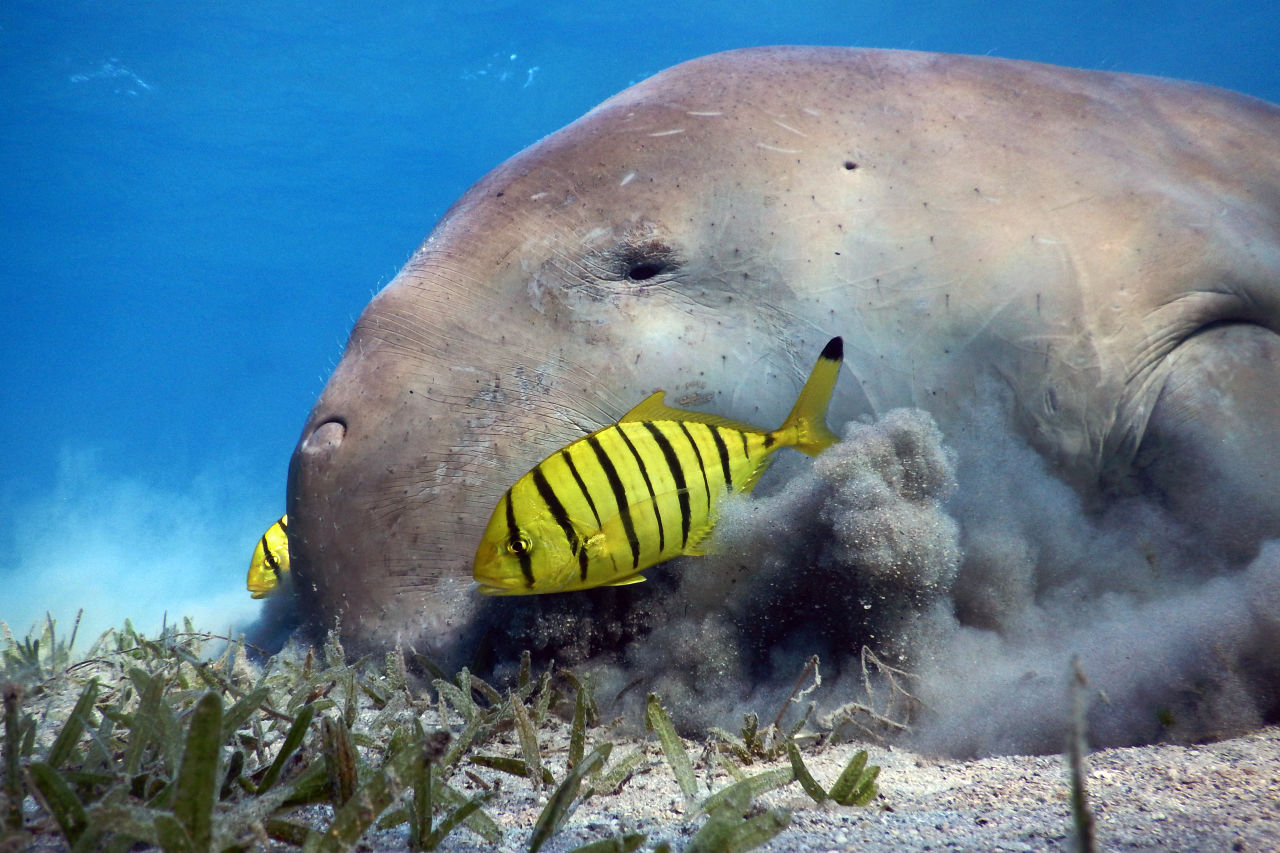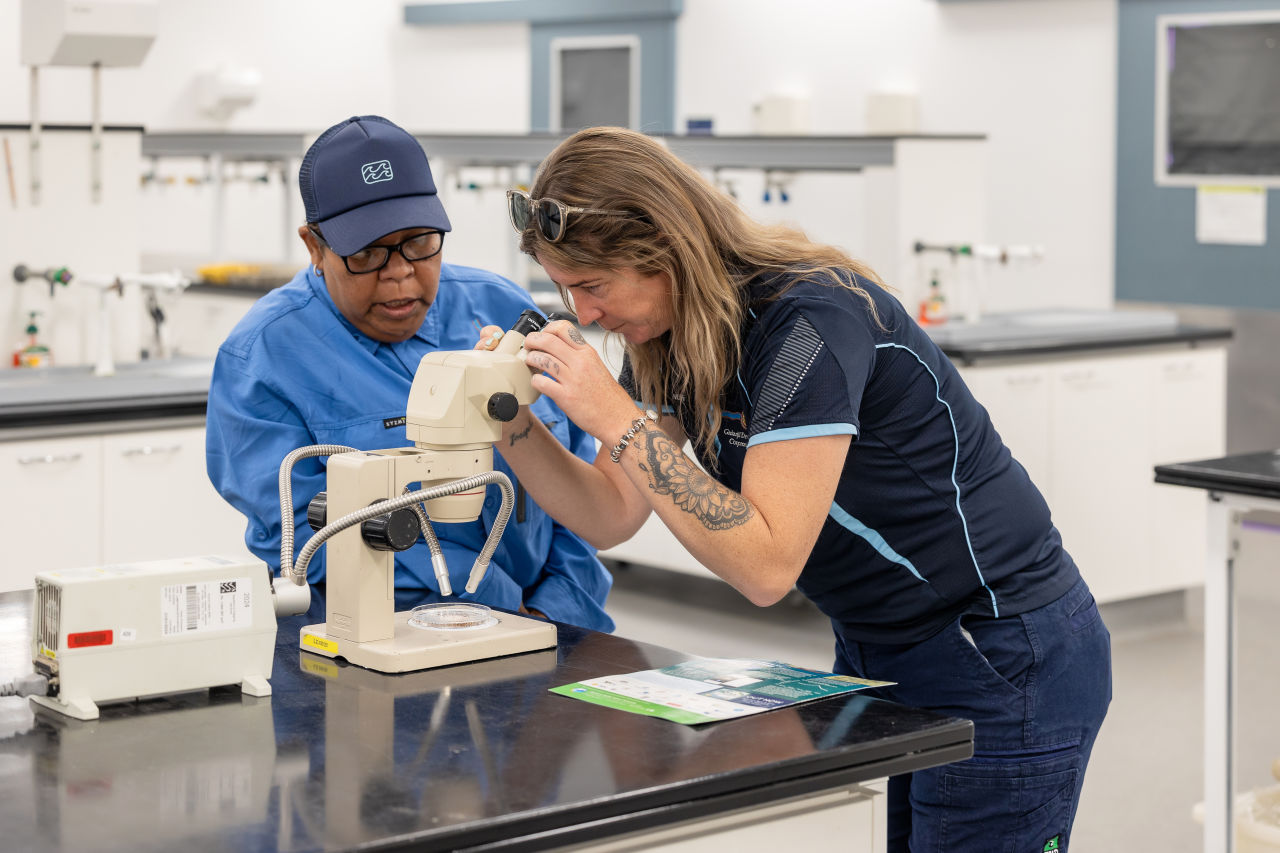For nearly two decades, Markeeta Sullivan's career revolved around food. As a chef, she understood the importance of fresh ingredients, balance, and sustainability in the kitchen. But it wasn't until she took a holiday to Gladstone—on a whim—that her path took a dramatic turn. Now, as a dedicated Land and Sea Ranger, she plays a critical role in running the world's largest seagrass nursery in Gladstone, working to restore vital underwater meadows that support threatened species like dugongs and sea turtles.
Driven by a deep love for the marine environment and a strong commitment to protecting sea Country, Markeeta's work helps rebuild fragile ecosystems, ensuring that future generations—including her own family—can experience the rich biodiversity of the Great Barrier Reef. She's passionate about sharing her knowledge with the community, educating young people on the importance of seagrass, and proving that small actions can lead to big environmental changes.
Find out how Markeeta went from cooking in busy kitchens to restoring one of the ocean's most important habitats—one seagrass blade at a time.

Markeeta teaching volunteers how to pick seagrass flowers for the nursery.
What first sparked your interest in the Great Barrier Reef?
"I grew up in between the Atherton Tablelands and Cairns so we were always at the beach, in the creeks and in the rainforest. My cultural heritage is Yidinjii, Gugu badhun and Torres Strait Islander and the elders would tell us to read the land and the weather, and if certain birds were migrating that means it's time for certain fish to come through, and things like that. Because of this I had a lot of cultural knowledge of these areas, but it wasn't until I started learning about the Great Barrier Reef and the diversity of the ocean and what it provided at school that my curiosity started to grow.
Tell me about how you came to be a Land and Sea Ranger?
"Growing up on a little country farm 45 minutes out of Cairns I was surrounded by an abundance of fruits and veggies, so food was always life when it came to my family. I got my first job in a café when I was 15 and I drifted doing different kinds of cooking, from airports to pubs and whatnot, for nearly two decades. I decided I didn't want to do cheffing anymore and happened to walk into Gidarjil Corporation the day they were interviewing for ranger positions. After a big yarn they offered me a traineeship and I just fell in love with it.

Seagrass meadows are critical feeding grounds for our Reef's largest grazers like dugongs. Credit: Ocean Image Bank
What have you learned by becoming a Land and Sea Ranger?
"When I first I walked into the Central Queensland University-run seagrass nursery in Gladstone I didn't know a razzoo about seagrass, what it does or even that turtles eat it! So there was like a boom of knowledge into how things work and grow, you know microorganisms and animals, the biodiversity of it all and how it interacts and interconnects with each other.
I've also learnt the impacts of things like climate change and the damage humans can do to the environment and the ecosystem unfortunately. But also, how we can restore areas that need it by mimicking how seagrass would grow on a meadow itself, making sure it gets sunlight but also enough fresh water mixed with its seawater as it can't just live on seawater alone.
What motivates you?
"There's too many animals and mammals going extinct these days and we just shouldn't let it go that far. We've got to try and keep them here and one of the ways we can do that is by restoring seagrass meadows as they are the kidneys of the ocean. They also take all of the fine sediment and keep it off the reefs, whilst also providing a nursery for the fish to grow.
It's all about caring for Country for me, as I would like the next generation of my family to see these beautiful creatures out there in the marine system. So helping to restore these meadows is the motivation for me because our mammals and marine ecosystem depend on them specifically, and if the seagrass meadows start disappearing then so do the dugong.

Markeeta showing a researcher a seagrass seed under the microscope.
What is your greatest professional achievement?
"I was really excited to win the National Indigenous Womens Ranger Collaboration Award recently and the NAIDOC Week Gladstone region Aboriginal or Torres Straight Islander Person of the Year last year.
That was recognising not only my work here in the nursery, but also of educating kids and the public about why seagrass is important to the area and getting them involved during seagrass picking season.
Do you have any advice for someone wanting to get involved in your field?
"Have the passion for the job and love what you're doing, because if you don't have passion or love for the job that you're doing and be willing to share and educate people then it's just meaningless. I genuinely love speaking about seagrass and sharing what I know about this awesome ecosystem and the marine life that live there."






